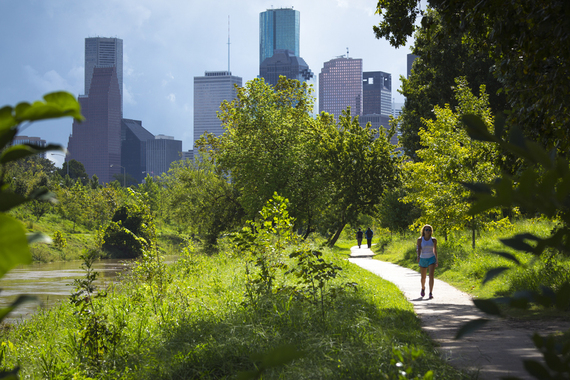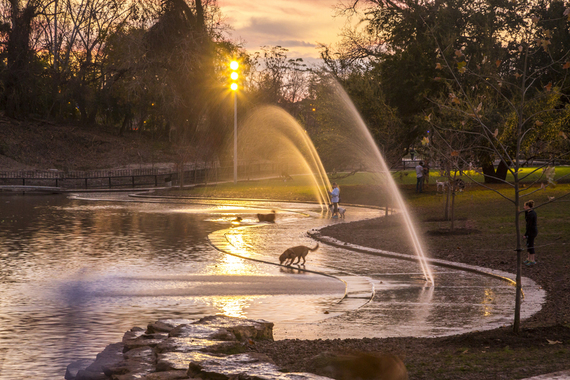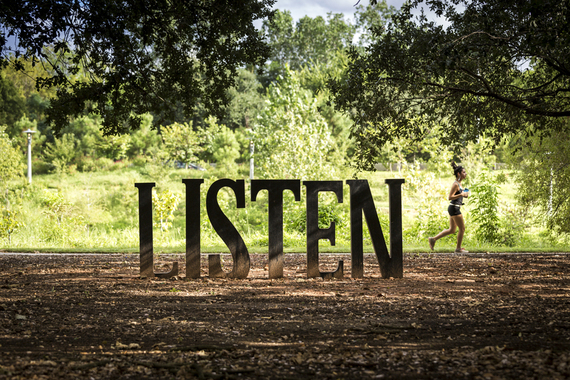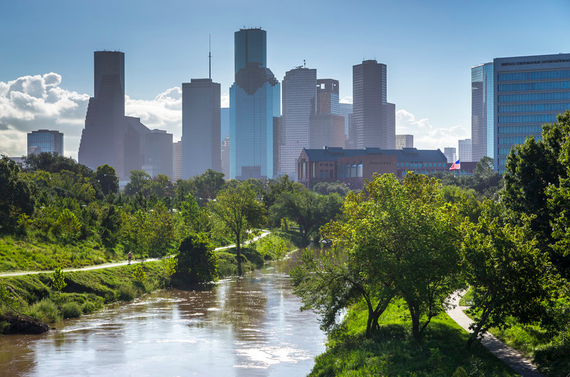The city of Houston, long known for jam-packed freeways and an ambitious skyline, is returning to its bayou roots -- thanks to a skillful landscape restoration by SWA.
Buffalo Bayou may be one of the reasons the city was established in Texas, but the park bearing its name had been slipping in recent years.
"It's a river that runs through the heart of the city," says Scott McCready, principal at SWA, the firm that worked with the Buffalo Bayou Partnership on the project. "There's a park that's persisted, but also suffering from issues like lack of access and facilities."
The 160 acre park -- 25 to 30 feet below the grade of surrounding roadways -- also was falling victim to frequent flooding. "It's pretty normal around here," he says. "Bayous by nature move laterally over time, and that's accelerated by the river, and an unstable environment."
Houston actually receives more rainfall than Seattle, usually in more extreme events -- big storms followed by long droughts in the summer. One result was that over time, many of the park's trails had become covered in silt.
SWA's landscape management solution is a series of flood "benches" that allow water to flow over the banks more easily and create places where silt can drop down. Workers come in later with equipment to scoop it out. "The silt can be reused -- it's very fertile," he says.
The silt challenge resolved, SWA set about rethinking the park's trail system for biking, hiking and walking, then divided the bayou up into four segments for a broader range of users. "Before the pedestrian bridges were there, you'd come in and be committed to a two-to-three-hour journey," he says. "Now you can come in for a half hour and a more limited exposure."
The firm was interested in managing the ecology of the site as well, pulling up 50 percent of its mowed turf, planting meadows and trees for unused areas and creating outdoor rooms.
The result is an new identity for Houston at the place where it got its start. "Now when someone calls it 'Bayou City,' you can see why," he says. "It reshapes people's experiences when they come here."
Just to prove that a picture's worth a thousand words, newly minted postcards of Houston depict a very green Buffalo Bayou Park in the foreground, and that famous skyline off in the distance.
The freeways may still be crowded, but now there's green space where people can go to escape them.
J. Michael Welton writes about architecture, art and design for national and international publications, and edits a digital design magazine at www.architectsandartisans.com, where portions of this post first appeared. He is the author of "Drawing from Practice: Architects and the Meaning of Freehand," from Routledge Press (2015).



